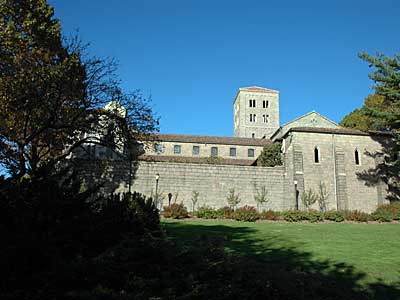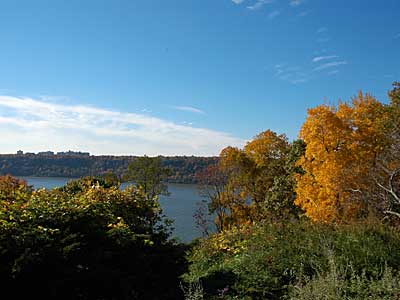NEW YORK CITY GUIDE: MUSEUMS
Offbeat destinations for adventurous visitors
(Words: ©ablarc from Wired New York; Photos:© urban75)
MUSEUMS
MOMA, the Met and the Museum of Natural History are unlikely to escape your notice, but three of New York's less brobdignagian museums might charm you more.

The Cloisters, in Fort Tryon Park way at the northern tip of Manhattan, is a romantic distillation of all things medieval.
Rockefeller-assembled from an assortment of European monastery parts, the collection features ivory devotionals, gold and jewelry, ceramics, metalwork, reliquaries, books of hours, stained glass, pollarded pear trees, sculpture, a Tudor chamber, a chapel, razor-sharp Flemish paintings, and the world's best series of medieval tapestries in exuberant celebration of unicorn hunting (they even have a specimen horn, if you can believe that).


Perched in regal isolation on a wooded bluff above the Hudson, the Jersey palisades and the George Washington Bridge, this peaceful place celebrates solitude and contemplation, and when the herb gardens are in full scent, it's a feast for the nose.
Sundays resonate in Gregorian tones, and once in a while there's ancient music live.
Access is via the A-train to atmospheric and barrel-vaulted 190th Street station, the way out from which is by rock-hewn elevator shaft and tunnel. Bucolic Fort Tryon Park welcomes with specimen trees, lush vegetation and New York's most charming outdoor eatery, the New Leaf Café.
After your museum visit, leave by the driveway portal, where the Number 4 bus waits idling to waft you back to Midtown on one of New York's most interesting routes. Take a seat facing frontwards and stay on it all the way to its terminus; you'll be surprised where it ends.
A long ride but rewarding - especially on a Sunday, when traffic's not too heavy.
To my mind, the Frick Collection is more than a match for the lumbering Metropolitan, ten blocks uptown, for within the judicious, single-story sprawl of this tranquil city mansion you'll find concentrated every bit as many top-drawer masterpieces as at the Met, without having to wade through crowd-filled acres of the lesser stuff.

Here you'll find Holbein's Thomas More, familiar portraits by Titian, rooms full of naughty paintings by Boucher and Fragonard, El Greco's more-than-magnificent St. Jerome, two Vermeers and two Rembrandts (one a self-portrait) better than the ones in the Met's collection, one of Ingres' two best portraits ever, the finest furniture from Renaissance to Louis XVI, stupendous works by Bronzino, Frans Hals, Van Dyck, Velazquez, Goya, Gainsborough, Hogarth, Turner, Whistler, Manet, Degas...all in surroundings as luminous and architecturally distinguished (John Russell Pope) as the Dulwich Picture Gallery, but with a much better collection. Not a clunker in the house, unlike the Metropolitan's warehouse of packrattery, which is full of them.
Henry Clay Frick, Andrew Carnegie's pit-bull partner, villain of the violent Homestead Strike, major-domo of Pinkerton's private army of thugs and killers, possibly the richest man of his time - Henry Clay Frick had a good eye.
Another plutocrat, Solomon R. Guggenheim, funded Frank Lloyd Wright's last major work, an architectural tour-de-force ideal for generating bustle and hype for flashy exhibits.
These have tended to mobiles, motorcycles, conceptual art, one-man shows, architecture or abstract painting. A permanent collection is heavy on Kandinsky, Picasso, Braque and other mainstream modernists, and is usually exhibited in level rooms, most of which were reworked by Gwathmey.
After picking your jaw off the floor, ride one of Wright's glitzy elevators to the top and coast down the ramps as though you were in a wheelchair. The space will follow you down.
Unlike the other two museums, Guggenheim is usually quite crowded.
|

